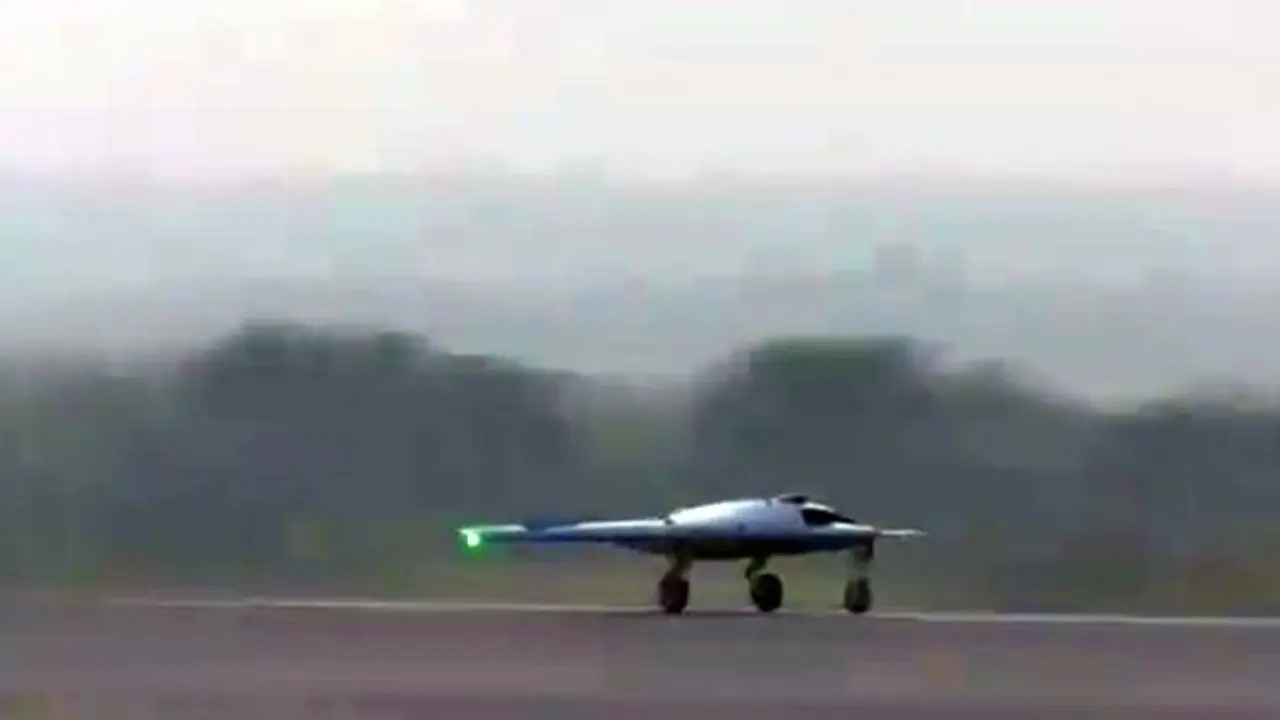The Defence Research and Development Organisation (DRDO) conducted a test of an autonomous flying-wing technology demonstrator, known as the Autonomous Flying Wing Technology Demonstrator (AURA) or Stealth Wing Flying Testbed (SWiFT), at the Aeronautical Test Range Chalkere in Karnataka. Girish Linganna reports
An autonomous flying-wing technology demonstrator was put through its paces at the Aeronautical Test Range Chalkere in Chitradurga district of Karnataka on December 15. The Defence Research and Development Organisation (DRDO), which is responsible for developing the technology, conducted the test. The DRDO has not yet commented on the test flight objectives. The flight flew in a pure tailless configuration.

The UAV is currently known as the Autonomous Flying Wing Technology Demonstrator or the Autonomous Unmanned Research Aircraft (AURA) or the Stealth Wing Flying Testbed (SWiFT). This particular aircraft design has a tailless flying wing, which means it has no horizontal or vertical stabilisers.
The aircraft is designed to fly at high subsonic speeds and is powered by a small turbofan engine housed within the aircraft. There is a striking resemblance between the design of the deadly B-2 Bomber jet of the United States and that of SWiFT.
It was in 2021 that DRDO began conducting ground experiments on SWiFT. SWiFT has an All Up Weight (AUW) of one tonne.
The first assembled prototype was put through a series of low, medium, and high-speed taxi tests during the trials. These tests aimed to evaluate the aircraft's performance and the equipment a ground control station installed. The tests determined whether or not the unmanned vehicle can function well when it reaches a high speed. A tailless design was used for the model.
The DRDO's SWiFT is a technology demonstration dedicated to the Ghatak Unmanned Combat Air Vehicle (UCAV). SWiFT is a "scaled-down version" of Ghatak, now being developed. The SWiFT unmanned aerial vehicle's primary objective is to show and validate the stealth and high-speed landing technology while operating in autonomous mode.
The taxi trials were finished in July 2022, and the capabilities of SWiFT to take off and land were proven at the Aeronautical Test Range of the Aeronautical Development Establishment (ADE) at Challakere, which is located in the state of Karnataka.
The Aeronautical Development Agency (ADA) in Bangalore is responsible for designing the Ghatak UCAV. The demonstrator's first flight, which took place in July 2022 at the Aeronautical Test Range in Chitradurga, was successful. This model had a vertical stabiliser (tail) like the fourth-generation aircraft.
After taking off, the aircraft flew to a designated waypoint and landed without problems. In the course of the flight, both the flying wing design and the autonomous flight control system were shown to be feasible.
Because the initial flight used a vertical stabiliser, observers were taken aback by the fact that this component is detrimental to stealth characteristics. Since DRDO did not want to incur the risk of flying a completely tailless design, the vertical stabiliser was solely utilised for testing purposes rather than for actual future use.
During the experiments, the DRDO did not indicate whether the vertical stabiliser played a role, whether it served as a backup, or whether it was employed to capture the flying characteristics of the UAV.
The SWiFT is powered by an NPO Saturn 36MT turbofan engine, which NPO Saturn Russia makes. This engine powers advanced trainers, light attack aircraft, and unmanned aerial vehicles (UAVs). It will eventually be superseded by the Small Turbo Fan Engine (STFE), with 450 kgf( 4,413 Newtons) power, developed by the Gas Turbine Research Establishment (GTRE).
Additionally, the GHATAK Unmanned Combat Air Vehicle (UCAV) could be propelled by a dry variation of the Kaveri after-burning turbofan engine, which would have a 48 KiloNewtons thrust. Compared to the STFE, the dry version of the Kaveri after-burning turbofan engine will have more power and fuel efficiency.
The DRDO and Godrej Aerospace inked a contract in September 2022 to produce eight dry Kaveri engines so that additional testing may be carried out before the anticipated conclusion of all tests by 2025.
The Combat Vehicles Research & Development Establishment (CVRDE) lab of the DRDO has been responsible for developing the drone's landing gear, another important component of the UAV. The limited bay volume and the increased amount of brake energy that must be absorbed during high-speed landing necessitate the development of a one-of-a-kind rotating system for retraction and deployment.
The most notable characteristics of landing gear include a retractable landing gear of the tricycle-nose wheel type, a hydro gas telescopic strut with the capacity to absorb energy for a maximum gross weight of one tonne, a hydraulic system for retraction, deployment and anti-skid braking, and a MIL-STD 1553B bus-based controller for landing gear operations and system health monitoring.
When the SWiFT airframe was completed, landing gear systems were delivered and incorporated. Several qualification tests were carried out, including drop and strength tests. Following a series of successful taxi tests, the first flight of SWiFT was completed using the Landing Gear System that CVRDE designed.
By the end of 2025, the Ghatak UCAV prototype will be put through its paces. The UCAV is meant for the Indian Air Force. Deck-based unmanned combat aerial vehicles (UCAVs) for aircraft carriers and landing platform docks are also something that the Indian Navy is interested in purchasing.
